Rainwater harvesting is a process of collecting the water rather than flowing it off. It can be collected in any place like the roof, ground, or any area that is on top of the ground. The main aim of rainwater harvesting is to protect the rainwater from wastage and use it for our daily life activities. As we see, in the rainy season most of the rainwater has flowed on the road, street, and drain.
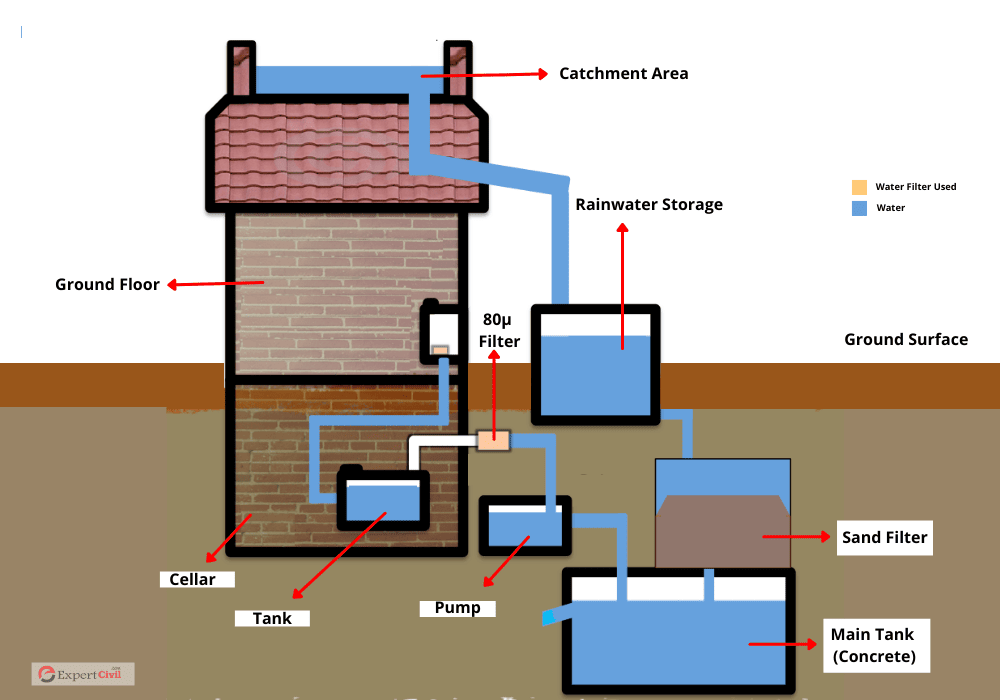
Nobody thinks of it. During the rainy season water strikes on the ground which has helpful for the crops, but also we can store that water for our future uses.
Definition
Rainwater harvesting is a way to store the rainwater for our future uses. As we know we have only a limited amount of groundwater which we can use for drinking. So to fulfill our need for drinking, we can use rainwater for drinking purposes after purifying it.
What is rainwater harvesting?
As we discussed above that rainwater harvesting is a process of collecting rainwater over the roof, ground, or hilly areas. Rainwater harvesting is a very useful way to fulfill our need for water. As it stores the rainwater so we can use it for our day-to-day life after purifying it. Purification of this water is important because there have impurities which present in our environment. And when the rainwater strikes on the ground then they mix up with these impurities.
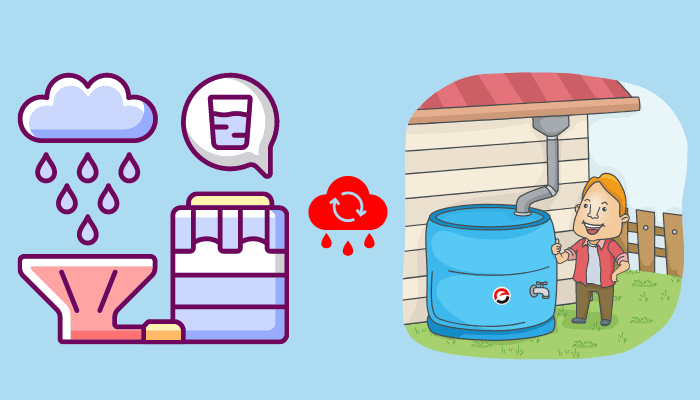
So purification of rainwater is very much important before using it. After the purification of this water, we can even use it for our drinking purpose also, because as we know rainwater has pure and freshwater, but due to impurities present in our environment, we have to purify it.
Types of rainwater harvesting
Mainly there are two ways of rainwater harvesting:
- Rooftop rainwater harvesting
- Surface runoff harvesting
What is rooftop rainwater harvesting?
Rooftop rainwater harvesting is a process to store rainwater on the roof catchment and send it to the reservoir for various uses. In this process of capturing rainwater, it has very easy to collect the rainwater because the roof has on the top of the building so it can collect most of the water and then send it to the reservoir.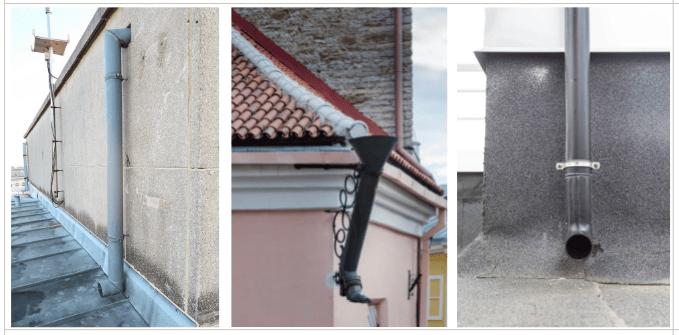
The reservoir stores all those water and keep it for various uses like drinking or household works. A reservoir has been made to dig the ground so it can also help to increase the water level of the ground. And thus it plays a very important role in maintaining the water level of the ground.
It has comparatively effective from the other way of collecting in populated areas because, in this method of collecting rainwater, the storage is situated at the upper place so it can store more water compared to surface storage of rainwater. And this is because in the populated area where a lot of buildings are present then it will be very difficult to collect the rainwater on the ground surface.
Components of rooftop rainwater harvesting
There are mainly four components of rooftop rainwater harvesting and those components are:-
- First flush
- Transportation
- Catchment
- Filter
These are the four components of rooftop rainwater harvesting. Now let’s discuss all these components of rooftop rainwater harvesting in detail.
1. First Flush
The first flush is a device that is used to avoid the contaminating storable or recharge of water. It means it is a device that is used to avoid the impurities mixed in water stored on the roof catchment. So it helps to make water clean.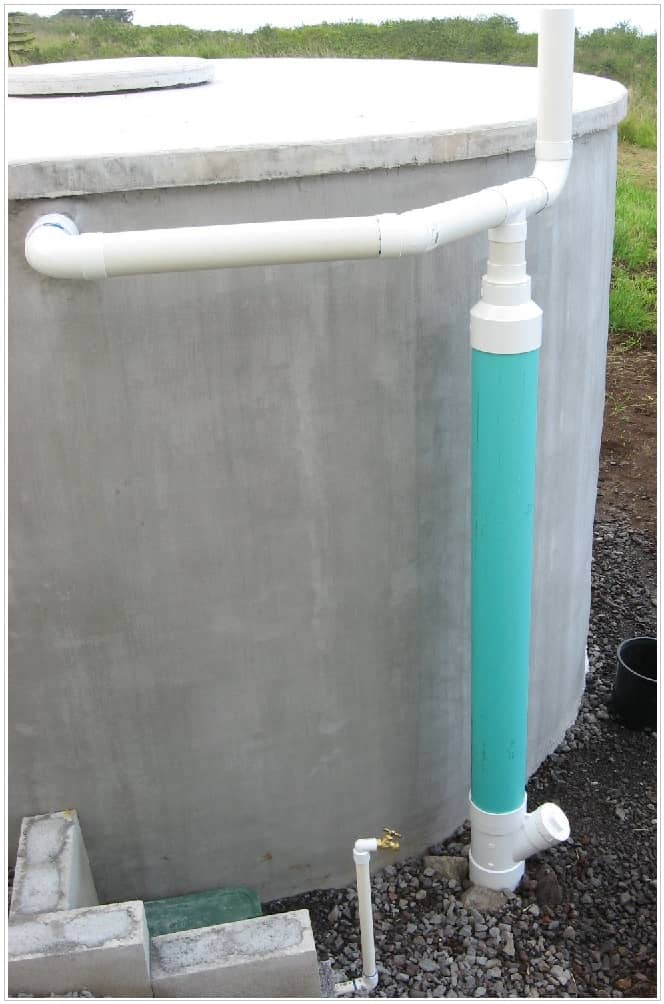
In the dry season when there have most of the chances for depositing impurities on the roof catchment, it helps to avoid the deposit of impurities on the roof. And thus it plays a very important while collecting and storing the rainwater in the reservoir.
Components of First Flush (Diagram)

2. Transportation
While the transportation of rainwater after collecting it on the roof catchment now it’s important to transport this water to the reservoir tank. So for transportation of rainwater pipes use. And these pipes must be UV resistant. So it should keep in mind that the pipe through which the transportation of rainwater is occurring must be UV resistant.
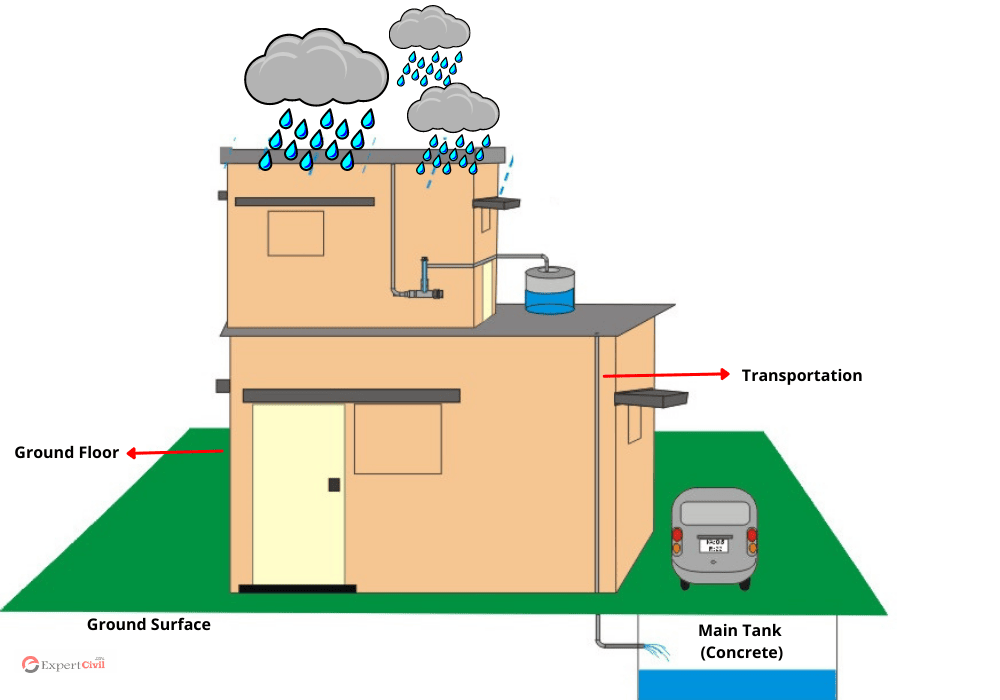
3. Catchment
In simple words, a catchment is a place where the collection of rainwater occurs. So it must be a flat surface, either it can be a courtyard, roof, or stone roof which must have a sloping area. So it can store more water and easily send it to the reservoir.
4. Filter
Now after collecting the rainwater and transporting it to the reservoir, it’s time to utilise this water for our personal uses like drinking or any other household uses. So for all these use the water must be free from impurities. To make the water pure and fresh it must be purified. So use a filter to purify the water and after the purification of rainwater, we use it for our household or drinking.
Also Read: Methods of Solid Waste
What is surface runoff harvesting?
Surface runoff rainwater harvesting is a process of collecting rainwater that has been flowing on the ground in rain. It means in this method the water which flows on the ground has been collected in a tank and used for irrigation and other uses. Mainly this water uses for irrigation purposes because this water contains a lot of impurities in it.
This method of collecting rainwater is also a very effective way to maintain the water level of the ground. Because in most of the areas groundwater or river water uses for irrigation but if this reserved water uses for irrigation rather than groundwater or river water then it will maintain the balance of water level.
Also Read: 8 major types of soil in India
The water is stored in such a way that a tank-type structure has made at the centre of the place where these water stores and then pipeline uses to bring the water from all the nearest areas where these rainwater is flowing and then all the water has stored in that tank. After the storage of water in this tank, this water is mostly used for irrigation purposes.
Methods of rainwater harvesting
There are mainly two methods of rainwater harvesting and those two methods are listed below:-
- Surface runoff rainwater harvesting
- Rooftop rainwater harvesting
Using these two methods rainwater harvesting is done. The main aim of surface runoff rainwater harvesting is for irrigation purposes while rooftop rainwater harvesting is for drinking and other household purpose.
Uses of rainwater harvesting
There are various uses of rainwater harvesting. Some of the uses of rainwater harvesting are listed below:
- For drinking
- For irrigation
- For maintaining the groundwater level
- For household purposes
Advantages of rainwater harvesting
There is a lot of advantages of rainwater harvesting which are listed below:-
- As rainwater doesn’t have to need any special equipment so it requires less cost.
- It helps to reduce the water bill.
- Increases the water level of the ground.
- After purifying the rainwater, it can use for drinking purposes.
- In the case of irrigation, there has no requirement for purification. So it reduces the cost.
- The installation of the rainwater harvesting technique is very easy and convenient so it can easily operate.
- It reduces stormwater runoff, soil erosion, pollution of surface water with fertilizer, flooding, pesticides, and other harmful causes.
- And overall it helps to balance the water level, and landscape irrigation.
Disadvantages of rainwater harvesting
Rainwater harvesting has great advantages but there are some of its disadvantages which are listed below:
- Regular maintenance of the catchment is required.
- Technical skills are required for the installation of this technique
- Unpredictable rainfall.
- If the rainwater harvesting is not properly installed then it can catch mosquitoes and cause various diseases.
- It has limited storage.
Importance of rainwater harvesting
Rainwater harvesting plays a vital role in maintaining the water level of the ground and also it reduces soil erosion, flooding due to heavy rainfall and also reduce the flow of stormwater to avoid flooding in urban areas.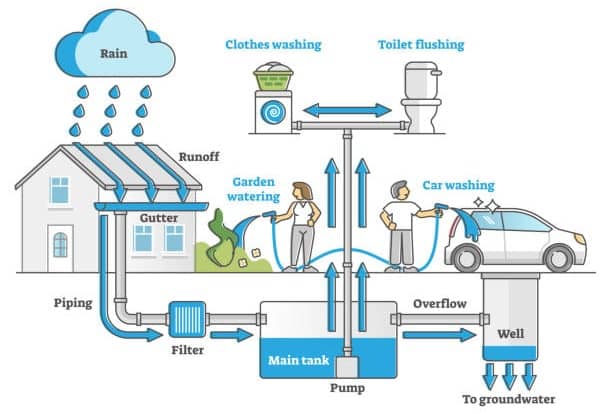
The objective of rainwater harvesting
The main objectives of rainwater harvesting are:
- Reduces water demand.
- Maintain the level of groundwater
- Reduces soil erosion
- Can be used for drinking, household, and irrigation.
- Prevents surface water from various fertilizers and pesticides
Conclusion of rainwater harvesting
After discussing the importance, objectives, and advantages of rainwater harvesting now we can conclude that it has various benefits and it plays a vital role in the water demand.
Analysis of rainwater harvesting
So rainwater harvesting is a very effective way to reduce the water demand so it can be an effective way for reducing water scarcity. And it can also fulfill the need for water for irrigation purposes so in the future it will become very important for all of us to install this technique on our roof catchment or surface catchments.
Also Read: A complete information about sand
FAQ’s on Methodology of Rainwater Harvesting
-
How many methods of rainwater harvesting are there?
There are two methods of rainwater harvesting. And those are rooftop rainwater harvesting and surface runoff rainwater harvesting.
-
What do mean by rainwater harvesting?
Rainwater harvesting is the process of collecting rainwater on the roof catchment or surface catchment.
-
Why rainwater harvesting is important?
Rainwater harvesting is important because it reduces the water demand and balances the ground level of water. It is also used for various purposes.
-
Why should people implement rainwater harvesting?
Because it balances the water level and reduces water scarcity.


[…] In this blog post, we will discuss the benefits of chajja in modern construction, including shading, rainwater harvesting, and energy […]